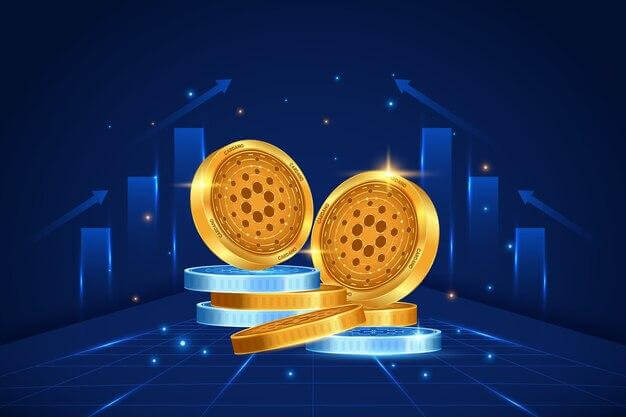Decentralized Finance (DeFi) is the hottest phrase in the crypto world, with new concepts being released daily. As a result, keeping up with the DeFi movement is nearly hard for readers. The Cardano ecosystem is no different. Hence, this article accesses the Cardano ecosystem and what people intending to buy Cardano should know.
What Is the Cardano Ecosystem?
The Cardano Ecosystem provides a significant incentive for ADA coins to gain value. Many new projects have elected to use the fair-launch scheme to distribute their tokens. This means that ADA holders can delegate tokens to project pools or related partners to receive project tokens with or without ADA benefits.
Charles Hoskinson, one of Ethereum’s founders, founded the Cardano ecosystem in 2015. Cardano is an open-source blockchain platform that runs on cryptocurrency tokens and is widely utilized to host decentralized systems and applications worldwide. Cardano lacks an authorized white paper to predetermine its position within crypto finance due to its birth narrative. Instead, Hoskinson envisioned layering a system to address issues in various crypto ecosystems.
The Cardano ecosystem is a third-generation blockchain platform made up of two layers: a settlement layer (CSL) and a computation layer (CCL), which are the foundations of every transaction.
The layer of Cardano Settlement (CSL)
Cardano’s creators aimed to create a system that separated a transaction’s value from its computational data. The Cardano Settlement Layer is responsible for coordinating the exchange of value (or currency) between the sender and receiver. In other terms, the settlement layer is the control layer’s and systems’ routing layer. Plutus and Marlowe are two specific scripting languages used by the CSL to move value and improve compatibility for the overlay network protocol.
The layer of Cardano Computation (CCL)
The Cardano Computation Layer assists Cardano in replicating the Rootstock smart contract platform from the Bitcoin () ecosystem (RSK blockchain). As technology progresses, this entails adding hardware security modules (HSM) to the existing stack of protocols. The decision to deploy CCL was based on its capacity to help scale specific protocols over time.
Overview Of Cardano’s Native Cryptocurrency Coin, ADA
The Cardano blockchain’s in-house cryptocurrency, ADA, lies on the Cardano Settlement Layer. The ADA cryptocurrency’s maximum supply is 45 billion tokens, which will be produced throughout time through minting. The strict cap on the overall token production ensures that ADA is deflationary. However, the ecosystem is doomed to exhibit an inflationary trend until it releases a significant percentage of its reserves for circulation, which is expected to begin in 2030 as more people are expected to join the trend and buy Cardano.
Like other prominent cryptocurrencies like Bitcoin and Ethereum, ADA may be exchanged for fiat currencies like the US dollar and held in cryptocurrency wallets. Third-party wallet services, in addition to Cardano’s native wallet options, provide ADA storage and transfers for anyone who buys Cardano.
ADA is built to function as a secure exchange of value that runs on Ouroboros, a suite of proof-of-stake blockchain consensus protocols, and it can be held securely in both hot and cold wallets. In addition, the Cardano blockchain can support other cryptocurrencies, non-fungible tokens, smart contracts, and decentralized applications (dApps).
Applications Of ADA
ADA and the Cardano ecosystem are supported by a large community of investors and engineers. As the cryptocurrency’s value rises, more people buy it and accept it as payment.
The most common method of payment is peer-to-peer (P2P) transfers between sender and receiver. In this type of transaction, the sender can send existing ADA tokens directly to the receiver’s wallet address, with no intermediaries. As Cardano’s popularity grows and more people decide to buy it, businesses have begun to integrate dedicated ADA payment gateways, allowing customers to make online purchases using ADA.
Cardano charges a transaction fee of 0.16 ADA on average. This calculation is based on transaction size and a standard fee per transaction. As a result, trading fees will increase proportionally to the transaction’s monetary value.
Another way for users to earn ADA tokens is by staking or confirming payment transactions on the Cardano blockchain. This entails transferring your existing ADA holdings to a staking pool, which node operators will then use to validate and confirm transactions in real-time.
It’s worth mentioning that ADA wallets can only be used with one staking pool at a time just like you use one referral code at a time. When it comes to Cardano staking, players should do their research and look for long-term gains. Staking payouts, or yields, are normally predetermined and vary for each pool for the ADA. Each wallet can only be associated with one staking pool. Before you buy Cardano or make commitments to ADA staking pools, you must ensure you carry out due research.
Samuel Njoroge
Related posts
Stay connected
- How LoveOn Chat Is Becoming the Most Versatile AI Companion for Digital UsersThe internet keeps shifting toward hyper-personal interaction, and AI companions are at the center of this shift. What used to be simple chatbots are now evolving into emotionally aware, adaptive, and multi-functional digital partners. Among the new generation of platforms, LoveOn Chat is becoming one... The post How LoveOn Chat Is Becoming the Most Versatile […]

